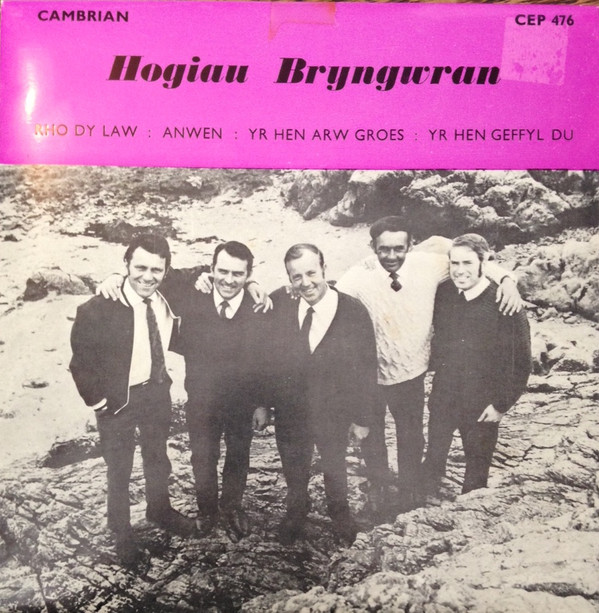MusiQ
Hogiau Bryngwran - Hogiau Bryngwran
Table of Contents
Download
Filename: hogiau-bryngwran-hogiau-bryngwran.rar- MP3 size: 26.4 mb
- FLAC size: 178.8 mb
Tracks
| Track | Duration | Preview |
|---|---|---|
| Yr Hen Arw Groes | ||
| Rho Dy Law | ||
| Anwen | ||
| Yr Hen Geffyl Du |
Images

Catalog Numbers
CEP 476Labels
CambrianListen online
- écouter en ligne
- lytte på nettet
- ouvir online
- escuchar en línea
- online anhören
- kuunnella verkossa
- ascolta in linea
- lyssna på nätet
- online luisteren
Formats
- Vinyl
- 7"
- 45 RPM
- EP
About Hogiau Bryngwran
The group was formed around 1955-56, with members attending the same Sunday School and the same Band of Hope in the village of Bryngwran , Anglesey . At that time, before the electricity arrived at the village, the group would practice under a lamp of barfaxine, embracing each other's harmony and voices. At that time, the accompaniment followed the style of the skiff of the period, with a simple straight guitar (a tied string attached to a wooden chest), simple drums, washing wood and a mouth organ.
Lonnie Donegan and his skiffy songs were a great influence on them and from the 1950's onwards, Radio Luxembourg introduced folk singers such as Hank Williams to broad audiences. The influence of such new music was seen at the Anglesey Eisteddfod in 1959 when Hogia Bryngwran and Hogia Llandegai had a fierce competition with Hogia Bryngwran winning (under the name Hogia'r Werin). As a result, the number of audiences and supporters for Hogia Bryngwran has grown in joyful evenings and concerts, as well as through radio and television.
The group appeared on the Amser Te magazine program, with Myfanwy Howell presenting a program produced by TWW TV from their studio in Pontcanna , Cardiff , and also on Welsh programs that Granada would provide from their Manchester studio on for a Welsh audience in north Wales. The Hogia had their unique sound, and one of their main features was to knock Idris Hughes. In the 1960s, Neville Jones (a member of Foot Wadin) joined them, and through the sound of his Hawaiian guitar, the group's sound further developed.
At the time of the National Eisteddfod of Wales, Ebbw Vale in 1958, Hogia Bryngwran was staying in the village of Cwm when they were invited to travel to Ireland to perform on Radio Eire, becoming an 'international' group if only for a moment. The record group released the Cambrian label in 1968, receiving a postal order for seven shillings and six pounds paid.
Name Vars
- Hogia Bryngwran
